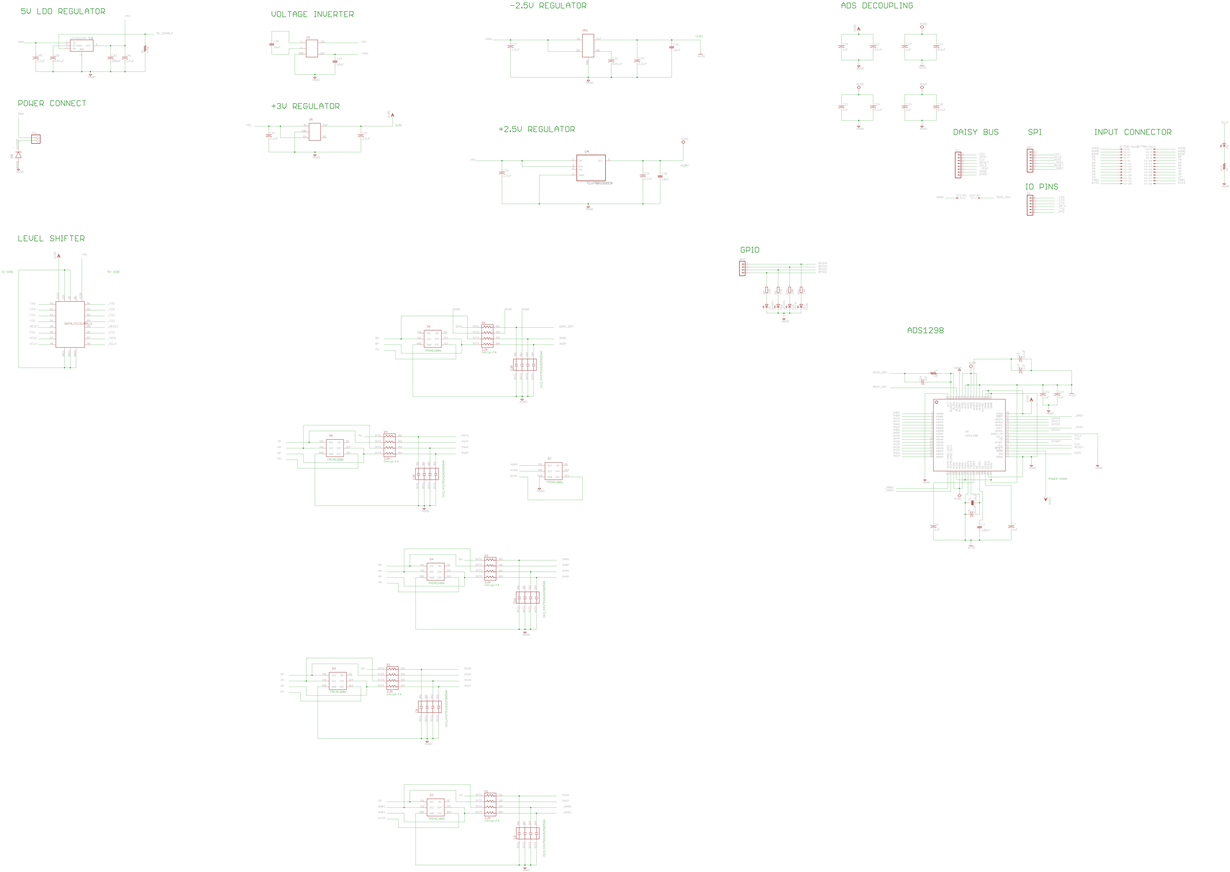Hi everyone, I'm trying to draw simple schematic for EMG based on ADS1298. I want to connect it via SPI to STM32F4 discovery. So, can I ask you to check my schematic and help me to understand how to connect common reference electrode (I'm planning to use all 8 channels). As far as I know we use only one common electrode for this chip. How it will affect to my other channel if I place this electrode on elbow for example (other electrodes are placed on biceps, triceps, trapezius, etc).
And how can I connect RLDs pins for measuring EMG. Also, according datasheet I can use 2 chips and get 16 channels. It could be using DAISY_CHAIN or
Slave -> Master <- Slave connection (SPI). If I'd like to use daisy chain, how can I draw my schematic for this purpose.
I have a level shifter to use it with Arduino (probably), cause it has 5V pins. As I know stm32 SPI works well without shifter
My schematic




